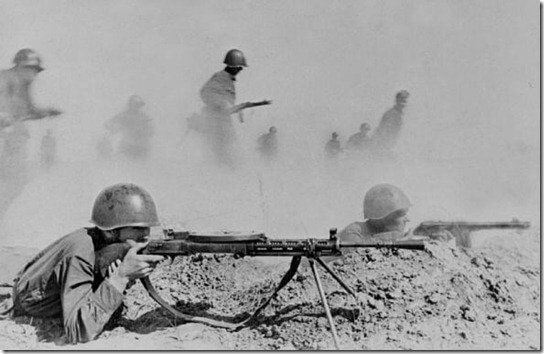
| Year | March 1928 |
| Weapon Type | Light Machine Gun |
| Origin & Designer | Russia/Degtyaryov |
| Numbers Produced | 400.000 |
| Crew | 2 (Gunner & Loader) |
| Calibre | 76.2mm (7.62x54R) |
| Elevation | [@elevation] |
| Traverse | [@gun_traverse] |
| Cartridge Weight | [@cartridge_weight] |
| Round Weight | 147gr (9.5g) |
| Barrel Length | 604mm |
| Overall Length | 1.270mm |
| Grenade Types | [@grenade_types] |
| Mount | Bi-Pod |
| Combat Weight | 9.12 kg |
| Operation | Gas Operated/Fully Automatic |
| Cooling System | Air |
| Sights | Front Blade & Rear Tangent |
| Feed | 47 Round Pan Magazine |
| Practical Rate of Fire | [@practical_rate_of_fire] |
| Maximum Rate of Fire | 550 r.p.m. |
| Blank Cartridge | [@blank_cartridge] |
| Muzzle Velocity | 840 m/s |
| Fuel Capacity | [@fuel_capacity] |
| Minimum Range | [@minimum_range] |
| Effective Range | 800m |
| Maximum Range | 2000m |
| Armour Penetration | [@armour_penetration] |
| Bayonet | [@bayonet] |
| Traction | [@traction] |
| Variants | DPM |
| Notes | The DP (Pulemyot Degtyaryova Pekhotny) was the standard light machine gun of the Russian infantry. It was issued to infantry platoons as a squad weapon and provided the rifle sections with their own fire support. It could only be issued with a pan magazine and this held 47 rounds. It had a few faults and these ranged from a flimsy bi-pod to problems with the recoil spring and these were addressed with a modified version named the DPM, this version fixed the issued found on the DP and had a pistol grip added, production switched to this version and it steadily replaced the DP. Both models were built in large numbers and remained in service even after world war two. |